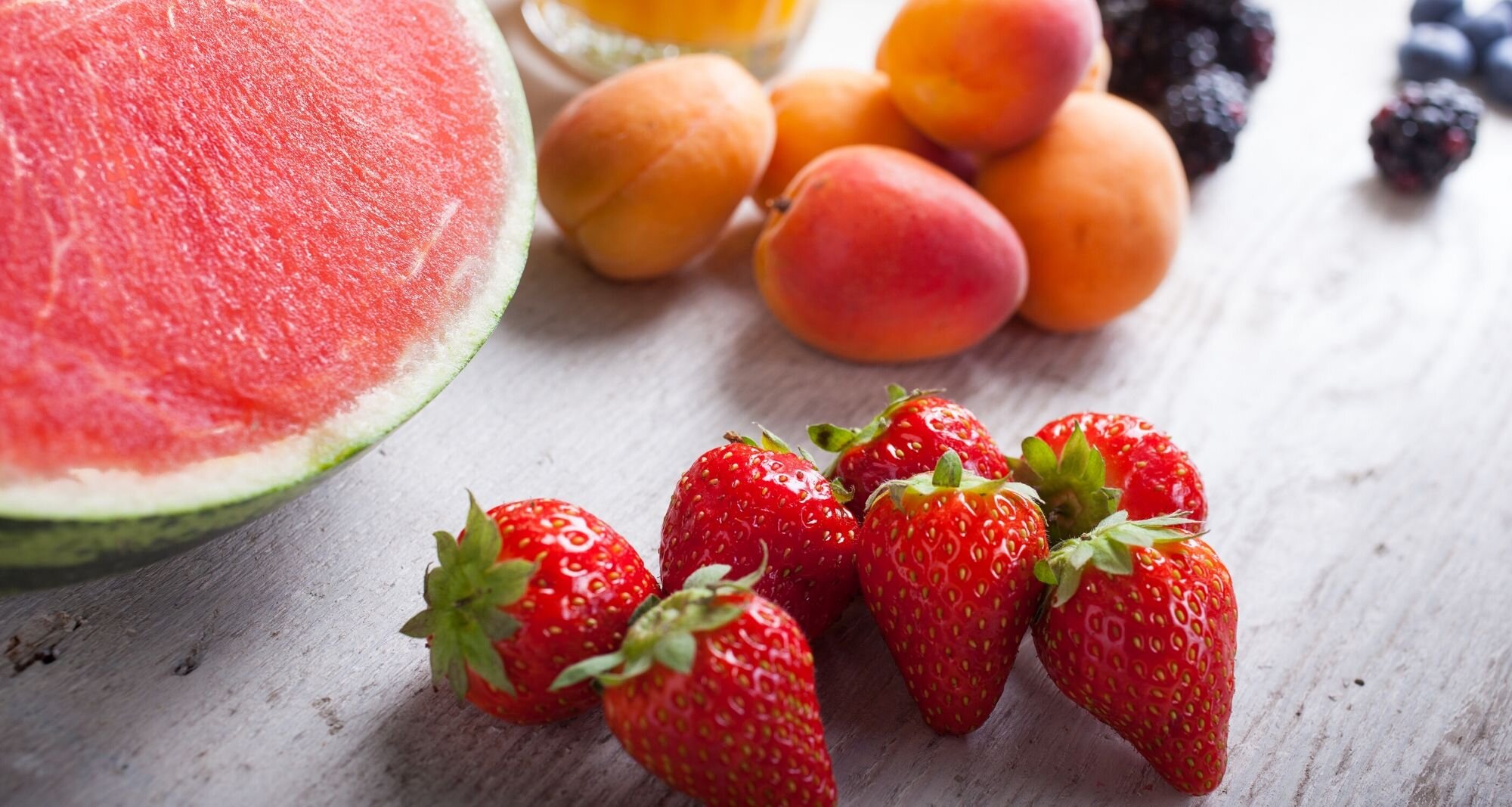How To Pick The Perfect Fruit
Tips and Tricks on how to pick out the perfect summertime fruits!
You’re browsing the produce section with every intention of picking up some of summer’s best fruit offerings. You look down and 39 peaches are staring back at you. You know that some of them are significantly more delicious than the others, and really want to make the right choice. As ripe and ready as it may look on the outside, sometimes you’ll find that the inside has a different story to tell. How does one pick the “perfect” fruit? Whether it be an old wives’ tale or a tried and true method, we’ll show you that there are a multitude of ways that you too can pick the perfect fruit!
Peaches
Farmers markets are always a good go-to when you’re on the hunt for ripe peaches. When your peaches are local, it typically means they didn’t have that far of a distance to travel to get to where you’re buying from; these peaches are usually picked ripe. However, if you don’t want to rely solely on farmers markets for your peachy needs, you can also ensure ripeness through physical observation. A peach’s color can say a lot about its readiness. If the peach’s color is nice and vibrant, more than likely it’s ready for eating. It’s also best to avoid picking peaches that have a little too much green on them, as it shows that the fruit isn’t quite ripe yet. Squeezing a peach is also another method for you to physically determine the fruit’s readiness. When gently pressing the shoulder and tip of the peach, if you notice that the fruit starts to give just a little bit, then it’s ready to eat.
Watermelon
Tapping on a watermelon can’t possibly determine its ripeness, right? Wrong! If you’re trying to find the perfect watermelon, you may find that determining its ripeness is as simple as tapping on it! Ripe watermelons will have a deep and hollow sound, which of course you’ll hear by tapping on the fruit’s underbelly. Under or overripe watermelons will have a dull sound, so be sure to steer clear from those. Another ripened watermelon determining factor is its yellow splotch. Watermelons develop this splotch when they rest on the ground and when that splotch is a creamy yellow, the watermelon is good to be devoured. It’s also important to note that if the watermelon is heavy, it’s likely full of juice and is ripe and ready to eat. If you’ve got a good ear, a keen eye, and can determine weight, finding the perfect watermelon should be an easy feat.
Avocados
Determining an avocado’s ripeness heavily relies on its feel, and partially on its color. A ripe avocado will typically have a somewhat darker green color, and it should feel mildly soft when you give it a squeeze. If your avocado feels mushy when you squeeze it and it’s really dark, that means that it’s overripe. When an avocado gives way to firm yet gentle pressure, it’s a tell-tale sign that it’s ready to eat! If an avocado feels light and pretty much “rock-hard,” it was probably picked too soon and is underripe. It’s super important to pay close attention to the color and the feel of an avocado so that you’re not stuck with an avocado that’s harder to cut than a diamond!
Mangos
Just like most fruit, giving a mango a light squeeze is a good way to go when it comes to assessing its ripeness. If the mango gives slightly, the fruit is soft inside and ready for tasting. Unlike other fruits, you can’t determine a mango’s ripeness based on its color as pretty much all mangos differ in color when ripe. For some mangos, you can tell its ripeness by smelling the stem’s ends; it will have a fruity aroma. Finding the perfect mango can be really simple when all you have to do is give it a light squeeze!
Strawberries
Unfortunately, strawberries are not the kind of fruit that continues to ripen after being picked. So, if you bought a batch of slightly yellowed strawberries expecting them to ripen with time, you’re in for some disappointment. When trying to pick the perfect strawberries, it’s important to be on the lookout for bright red berries. If the strawberry is bright red from top to bottom, it’s definitely ripe. It’s also important to make sure the leaves are fresh and green and not wilted. Strawberries that look dry or shriveled show signs of aging berries, and who wants to eat an old strawberry? Determining strawberry ripeness can easily be done by mere inspection, so make sure to keep a close eye on the fruits when you’re on the hunt for perfection!
Cantaloupe
Cantaloupes are the kind of fruit whose ripeness can be determined best by smelling it; it will have a sweet but musky scent to it. You can also tell if the fruit is good by assessing its weight. A good cantaloupe will feel relatively heavy for its size. The rind of a ripened cantaloupe will resemble raised netting and be beige in color, and its stem will yield slightly when pressure is applied. Just like strawberries, cantaloupes will not ripen anymore once picked, so it’s important to pick the right one before you leave the grocery store. Giving a ripe cantaloupe a few taps will give off a low, solid sound. A high-pitched or hollow sound is not a good sign, so if that’s what you’re hearing then be sure to put it back and give the other ones a good listen! There are multiple ways to tell if you’re picking the perfect cantaloupe, making your grocery trip ten times easier.

